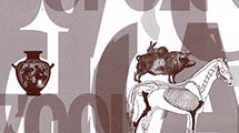

 Anthropozoologica
47 (1) - Pages 73-155
Anthropozoologica
47 (1) - Pages 73-155Most — if not all — names of both indigenous and exotic snakes as evidenced in ancient Greek were neither of Indo-european origin nor borrowed from foreign languages. They were coined by the Greeks on the basis of criteria of three types. The first and predominant type referred to zoological data (from morphology to behaviour, bio-ecology or zoogeography), the second one to venomous symptoms, the third one to anthropological features. In this insight, all three are defined, the first two are surveyed with the case study of the ophionym dipsas and its synonyms. For its linguistic, herpetological and iological contents, this case provides a representative example for introducing to the ancient Greek system of snake naming.
snake naming in ancient Greek, dipsas, ammoatis, ammobatēs, ammodutēs, kausōn, kausos, kentrinēs, kentris, melanouros, prēstēr, prēstēs, Vipera ammodytes meridionalis, Cerastes cerastes, Cerastes gasperettii, Cerastes vipera, Eristicophis macmahonii, Pseudocerastes fieldi, ancient Greek herpetology, history of herpetology.